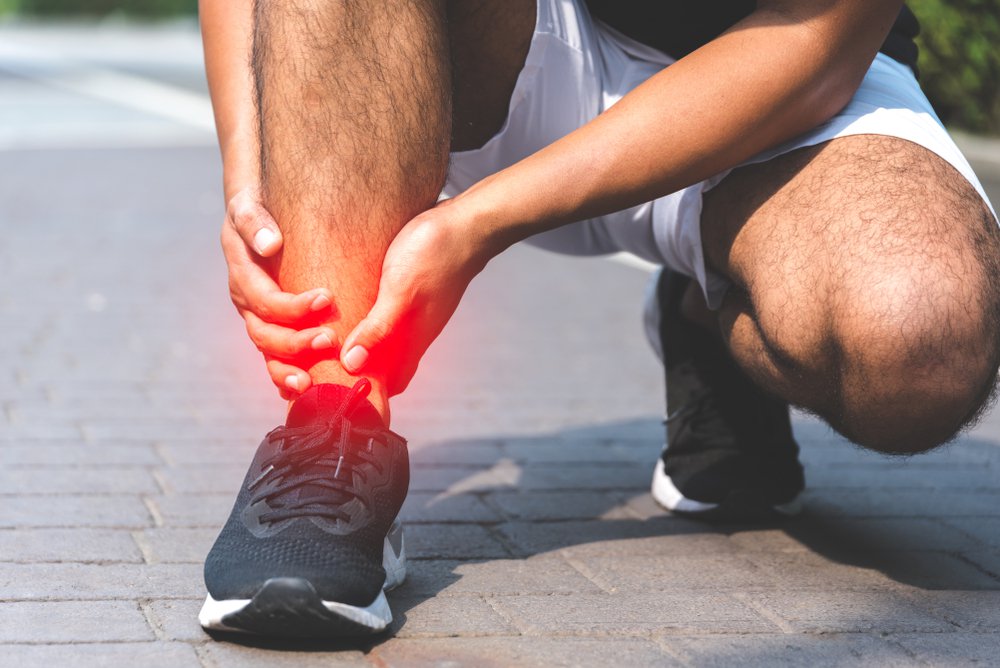 It’s easy to understand why people confuse sprains and strains; besides having very similar names, these injuries also have similar symptoms like pain and inflammation. However, there are differences between a sprain and a strain, with each affecting different tissues within the body.
It’s easy to understand why people confuse sprains and strains; besides having very similar names, these injuries also have similar symptoms like pain and inflammation. However, there are differences between a sprain and a strain, with each affecting different tissues within the body.
Either way, these injuries most commonly affect athletes while they’re playing the sports they love, and for that reason, it’s important for athletes to know the difference between these injuries, how to prevent them, and how to get the best treatment (we’ll spoil this part for you: the way to get the best treatment is by going to Dr. Michael Rytel!)
What are Sprains?
A sprain affects ligaments, or the bands of tissue that connect bones together within a joint. Ligaments are both tough and elastic, giving your joints support while also limiting their movement. They are also found in every joint, like your shoulders, elbows, knees, and ankles. A sprain occurs when these ligaments are stretched or torn, most commonly as a result of sports or other athletic activities, though sprains can also be caused by accidents or general wear and tear.
A sprained ankle is the most common of this kind of injury, usually caused by walking or exercising on an uneven surface or landing awkwardly after a jump. However, knees are also quite prone to sprains; you’ve likely heard of a torn ACL taking an athlete out of a game before. The ACL is a ligament located in the knee that connects the thighbone to the shinbone, and it can become stretched or torn when pivoting during athletic activity. Wrist sprains are also common, caused by trying to catch yourself on an outstretched hand during a fall.
When you suffer a sprain, you might feel a pop or tear in your joint when it happens. After, you might experience symptoms of a sprain like pain, swelling, bruising, as well as limited movement in the affected joint. Regardless of which ligament was injured and how, a sprain can be serious.
What are Strains?
While a sprain is a stretch or tear to a ligament, a strain is a stretch or tear to a muscle or tendon. Also, whereas ligaments connect bone to bone, tendons connect muscle to bone. Tendons are cords of strong, flexible tissue that work with our muscles to let us move our limbs. Strains can happen suddenly (acute) or develop over a longer period of time (chronic), and like sprains, are most commonly caused by athletic activity.
Contact sports, like soccer, football, hockey, boxing, and wrestling, can all put you at a higher risk of straining your muscles and tendons. Some sports, like gymnastics and golf, raise your risk of injuring specific muscles and tendons; in this case, the ones in your hands. Similarly, sports that involve throwing, like baseball and football, as well as sports that use rackets, like tennis, can increase your risk of elbow strains.
Symptoms of a muscle strain include pain, swelling, cramping, inflammation, muscle spasms, muscle weakness, and some loss of muscle function. If a strain is severe, meaning a muscle or tendon has been partially or completely torn, it can be very painful and potentially disabling. While several of these symptoms overlap with sprains, it is important to note that a sprain may make an audible popping sound, whereas a strain may cause muscle spasms and cramps. This difference between a sprain and a strain may help you to better understand your injury before visiting your doctor.
How Can These Injuries be Prevented?
Sprains and strains are painful injuries that can take you out of the game. There are several things you can do to help protect yourself from getting a sprain or strain:
- Wearing shoes that fit properly
- Getting new shoes when your current pair wear out
- Wearing protective equipment
- Maintaining a healthy weight
- Staying in proper physical condition for your sport
- Warming up and stretching before exercising or playing sports
- Avoiding exercise and sports when tired or in pain
In short, doing your best to use proper and protective equipment and taking care of your body, whether that means exercising regularly or knowing when to take a break, can help you avoid these injuries. However, if you do happen to suffer a sprain or strain, what should you do?
How Are These Injuries Treated?
Common treatments for sprains and strains include resting and elevating the injured area, as well as icing the injury for 20 minutes at a time, 4-8 times a day. However, after suffering a sprain or strain, the first thing you should do is visit an orthopedic doctor near you, like Dr. Michael Rytel. Dr. Rytel and other doctors like him can determine the type and severity of your injury, leading to the best treatment, which may even include surgery in more severe cases.
Dr. Michael Rytel, a fellowship-trained and board-certified orthopedic surgeon and sports medicine specialist. Located in the Pittsburgh area, Dr. Rytel is the perfect doctor to turn to when you have any kind of sports injury, not just sprains and strains. Request an appointment online or call (412)-661-5500 to schedule an appointment today at Rytel Sports Medicine!

